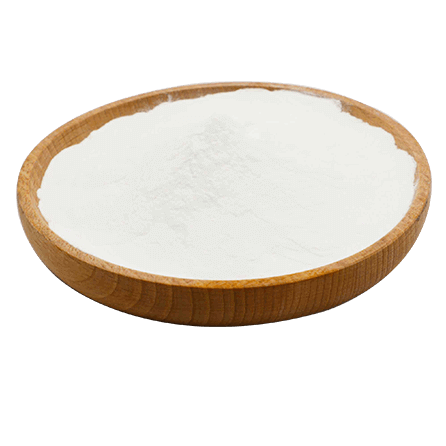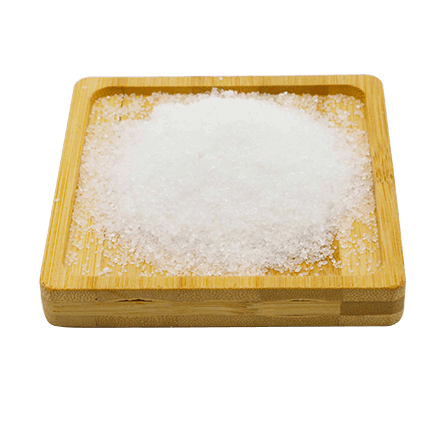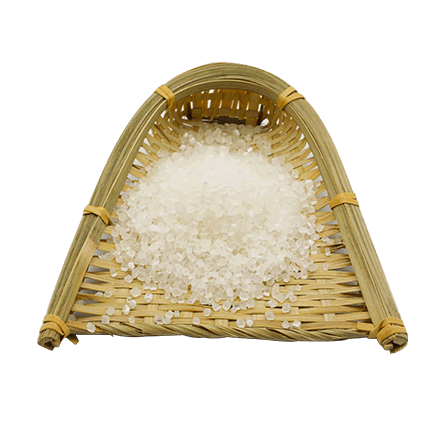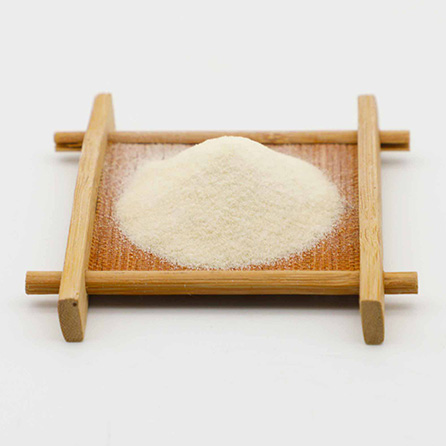
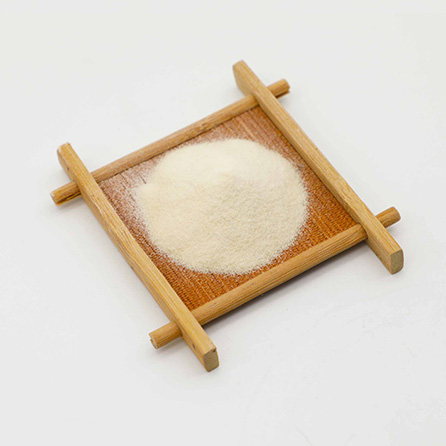
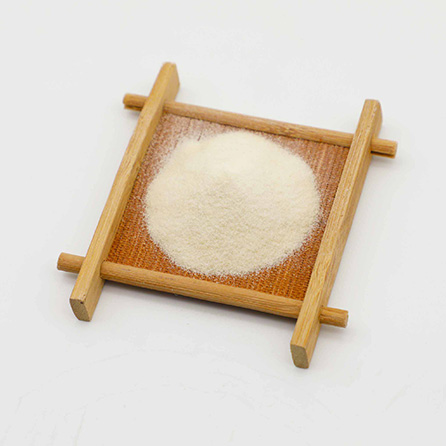



Gelatin powder
Product Description:
Gelatin is a macromolecular hydrocolloid, which is the product of partial hydrolysis of collagen. According to its properties and uses, it can be divided into photographic gelatin, edible gelatin and industrial gelatin. According to different uses, the quality requirements for gelatin are also different. When used as a binder, the main requirement is the bonding strength. When used in photography, food, medicine and other fields, the purity of the product is emphasized.
product description
Gelatin is a product obtained by moderate hydrolysis and thermal denaturation of collagen. The raw materials for producing gelatin are mainly animal skins, bones and tannery wastes. The common gelatin on the market is mostly prepared from bovine cow bones or pig skins. Due to the emergence of mad cow disease and foot-and-mouth disease, many gelatin manufacturers have turned to fish skins, fish scales and chicken skins to prepare gelatin. At present, the production methods of gelatin mainly include alkaline method, acid method and enzymatic method. Alkali method and acid method are traditional production methods, and the production cycle is generally 15 days longer, and the discharged waste liquid causes great pollution to the environment. Due to the low production cost and high product safety of gelatin prepared by enzymatic method, gelatin produced by acid method and alkali method is gradually replaced in the fields of medicine and food.
Product properties
Gelatin, colorless to pale yellow solid, in powder, flake or block. Shiny, odorless, tasteless. The relative molecular mass is about 50,000 to 100,000. The relative density is 1.3 to 1.4. It is insoluble in water, but when immersed in water, it can absorb 5 to 10 times of water and swell and soften. If heated, it will dissolve into a colloid, and it will become a gel when cooled to below 35 to 40 °C; if the aqueous solution is boiled for a long time, Changes in properties due to decomposition, no gel formation after cooling. Insoluble in ethanol, ether and chloroform, soluble in hot water, glycerol, propylene glycol, acetic acid, salicylic acid, phthalic acid, urea, thiourea, thiocyanate and potassium bromide. This product does not solidify when the concentration is below 5%, and usually forms a gel with a solution of 10% to 15%. The temperature of gelation varies with concentration, co-existing salts and pH. Viscosity and gel strength vary with relative molecular mass distribution and are affected by pH, temperature, and electrolytes. If the solution of this product encounters formaldehyde, it becomes an irreversible gel that is insoluble in water. This product is easily hygroscopic and corrupted by bacteria, so care should be taken when storing it. When hydrolyzed, various amino acids can be obtained.
Product Usage
Gelatin can be divided into edible gelatin, medicinal gelatin, photographic gelatin and industrial gelatin according to the application.
Gelatin can also be used to make jellies. Gelatin jellies do not crystallize in warm, unmelted syrup, and warm jellies can be re-gelled after the curds are broken up. As a stabilizer, gelatin can be used in the production of ice cream, ice cream, etc. The function of gelatin in ice cream is to prevent the formation of coarse ice crystals, keep the structure fine and reduce the melting speed.
Gelatin is added to meat products as a jelly agent for the production of fragrant wild pork, aspic, canned ham, mouth strips, veal, ham pie, canned meat and Zhenjiang meat, which increases the output and quality. Gelatin also acts as an emulsifier for some meat products, such as emulsifying the fat in meat sauces and cream soups, and protecting the original character of the product. In canned food, gelatin can also be used as a thickening agent. Powdered gelatin is often added, or a thick jelly made of one part gelatin and two parts water can be added.
Gelatin can be used as a clarifying agent in the production of beer, fruit wine, dew, fruit juice, rice wine, almond milk beverage and other products. Its mechanism of action is that gelatin and tannin can form flocculent precipitation. After standing, the flocculent colloidal particles can be adsorbed, coagulated, and co-precipitated with turbidity, and then removed by filtration. For different beverages, gelatin can be used with different substances to achieve different effects.
Gelatin is widely used in the field of medicine due to its biodegradability, good biocompatibility and film-forming properties. There are more than a dozen raw materials needed to make capsule shells. Among them, gelatin takes the top spot, accounting for more than 90% of the quality of capsule shells.


